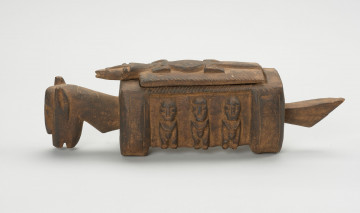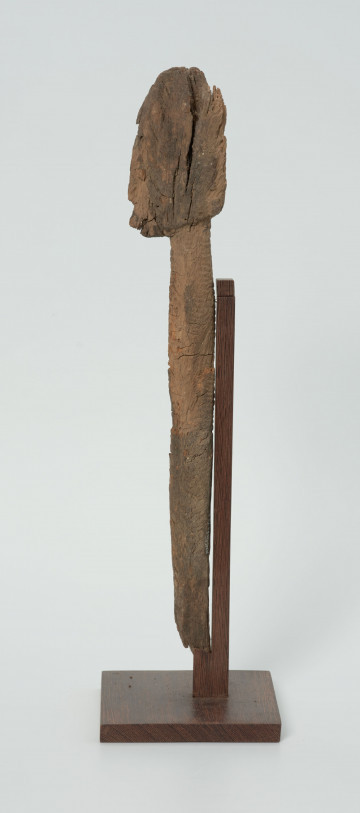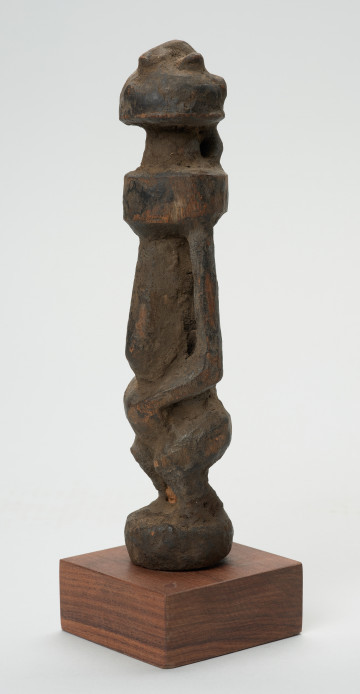
Nommo Ark
między 1951 — 2000
National Museum in Szczecin
Part of the collection: Collection of Dogonian art
Nommo are the essential characters in Dogon mythology. They are the children of the god Amma, born of a relationship with Mother-Earth. They assisted in creating the first humans and are responsible for the organisation of life on Earth. They are associated with water and moisture, which, according to the Dogon, are necessary for the fertilisation of Earth and women. Nommo passed on to the people the knowledge of how to cultivate the land and make all the items needed for everyday life. The life the Dogon lead is mainly due to Nommo’s teachings. In myth, Nommo help the eight ancestors who gave birth to the prominent Dogon families.They are imagined in human form, and sometimes they are shown as snakes or fish. Sometimes they have characteristics of all these creatures. According to various accounts, Nommo have pale faces, long black hair, and forked tongues like a snake. Their skin is decorated with patterns consisting of short straight lines. They are often pictured in the form of hermaphrodites.The Dogon speak of Nommo as a single deity, sometimes a pair of deities, and other times they name four pairs of these unusual beings. Some inhabitants of the Bandiagara Escarpment believe that there are as many of them as water bodies, in each of which one Nommo lives.The discrepancies in the collected descriptions and information probably depend on the level of initiation of the informants because the extensive knowledge and mythology of the Dogon are not known to the whole society. Only a small group of men can boast of knowledge of it. In the middle of the 20th century, it was estimated that only 15% of adult men were initiated into the highest level of knowledge. Over the years, with the expansion of Islam, the number has seriously decreased.
Ewa Prądzyńska
Author / creator
Dimensions
cały obiekt: height: 31,2 cm, width: 5 cm
Object type
figure
Creation time / dating
Creation / finding place
Identification number
Location / status

między 1951 — 2000
National Museum in Szczecin

między 1901 — 1950
National Museum in Szczecin

między 1951 — 2000
National Museum in Szczecin
DISCOVER this TOPIC
National Museum in Lublin
DISCOVER this PATH
Educational path